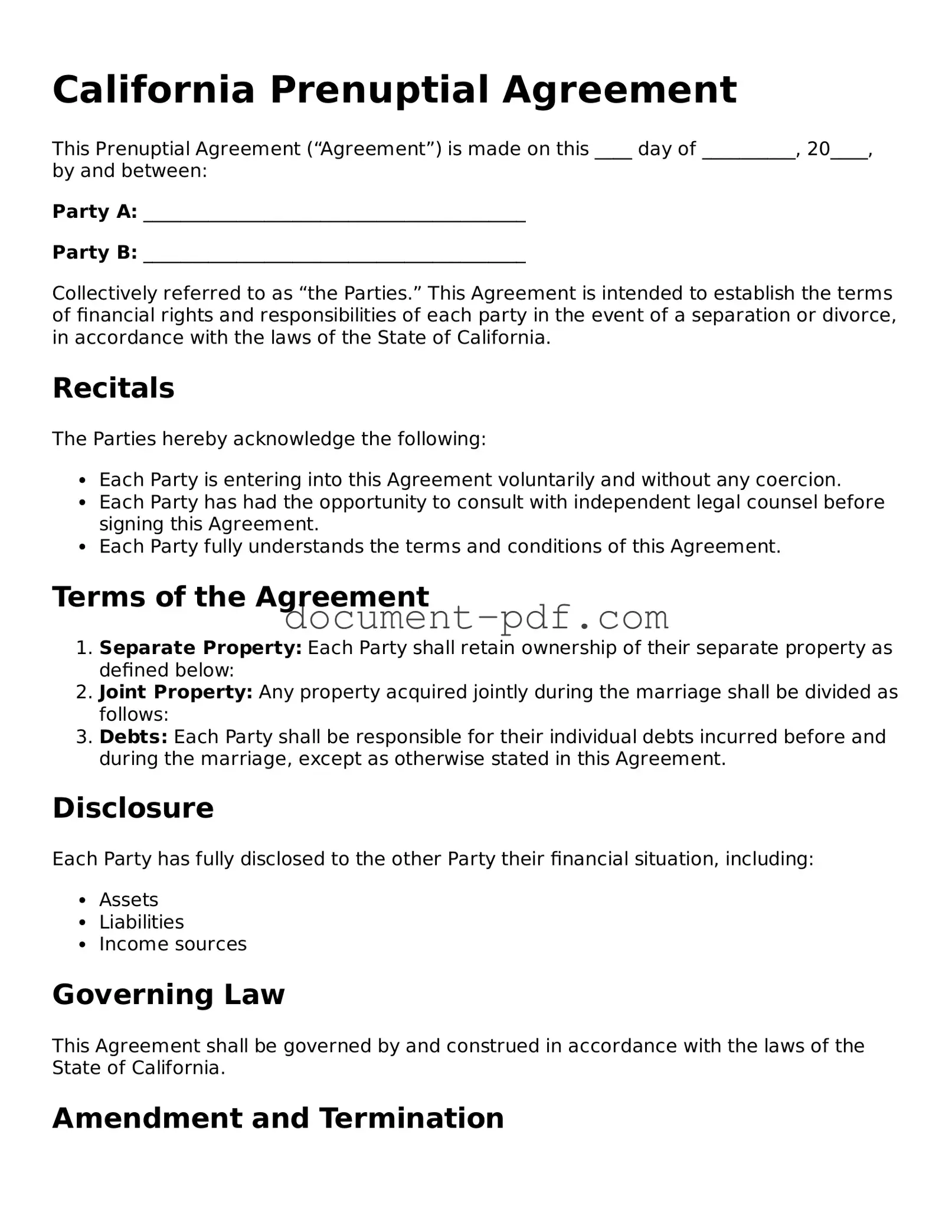California Prenuptial Agreement
This Prenuptial Agreement (“Agreement”) is made on this ____ day of __________, 20____, by and between:
Party A: _________________________________________
Party B: _________________________________________
Collectively referred to as “the Parties.” This Agreement is intended to establish the terms of financial rights and responsibilities of each party in the event of a separation or divorce, in accordance with the laws of the State of California.
Recitals
The Parties hereby acknowledge the following:
- Each Party is entering into this Agreement voluntarily and without any coercion.
- Each Party has had the opportunity to consult with independent legal counsel before signing this Agreement.
- Each Party fully understands the terms and conditions of this Agreement.
Terms of the Agreement
- Separate Property: Each Party shall retain ownership of their separate property as defined below:
- Joint Property: Any property acquired jointly during the marriage shall be divided as follows:
- Debts: Each Party shall be responsible for their individual debts incurred before and during the marriage, except as otherwise stated in this Agreement.
Disclosure
Each Party has fully disclosed to the other Party their financial situation, including:
- Assets
- Liabilities
- Income sources
Governing Law
This Agreement shall be governed by and construed in accordance with the laws of the State of California.
Amendment and Termination
This Agreement may only be amended or terminated by a written document signed by both Parties.
Signatures
By signing below, the Parties acknowledge and agree to the terms of this Agreement.
Party A Signature: ___________________________
Date: ___________________________
Party B Signature: ___________________________
Date: ___________________________
